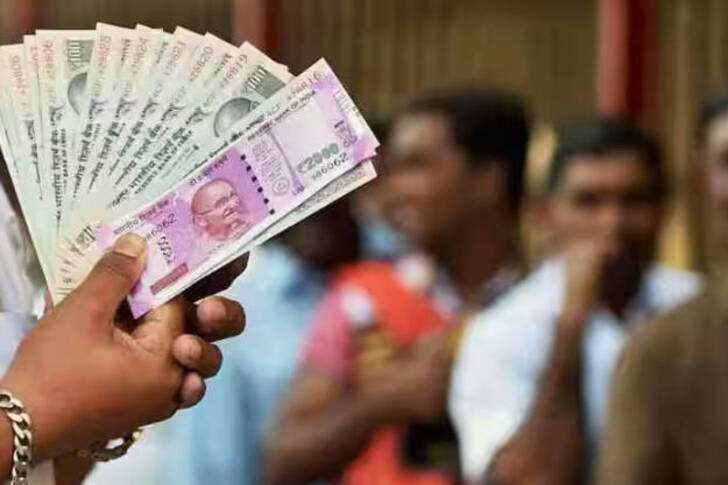Student Loan in India: How to Get the Lowest Interest
In India, financing higher education is often a challenge, leading many students to seek student loans. This article provides a detailed guide on how to secure the lowest interest rate on student loans in India, covering factors that affect loan terms, key lenders, government schemes, and practical tips for negotiating better rates.

1. Introduction to Student Loans in India
As the demand for higher education grows in India, student loans have become a critical source of financial support. These loans are designed to help students cover tuition fees, living expenses, travel costs, and other associated expenses for both domestic and international education.
In India, several public and private banks, as well as non-banking financial companies (NBFCs), offer student loans. Each financial institution has its own interest rates and terms, making it crucial for students to compare options and select the most favorable one. Generally, loan interest rates in India for education loans range from 7.5% to 13.7%, depending on various factors.
2. Factors Influencing Student Loan Interest Rates
Interest rates on student loans depend on several factors, which can either reduce or increase the overall cost of borrowing. Understanding these factors helps you position yourself better to secure a loan at a favorable rate.
2.1 Academic Institution and Course
The institution and course for which you are applying for a loan play a significant role in determining the interest rate. For example, prestigious institutions such as IITs, IIMs, and other government-recognized universities often attract lower interest rates. This is because these institutions have a strong record of graduates finding well-paying jobs, reducing the risk for banks.
2.2 Loan Amount
Typically, loans up to INR 7.5 lakhs do not require collateral, but amounts exceeding this usually require some form of security. The more the loan amount, the higher the interest rate, especially in the case of unsecured loans. However, offering collateral may reduce the interest rate significantly.
2.3 Repayment Tenure
The duration of the loan repayment, known as the tenure, can also influence the interest rate. Shorter repayment periods generally come with lower interest rates, but they increase the monthly EMI burden. On the other hand, longer tenures reduce the EMI amount but might lead to higher overall interest costs.
2.4 Credit Score
Your credit score, as well as that of your co-borrower (usually a parent or guardian), can significantly impact the interest rate. A good credit score (typically above 750) can help secure a loan at a lower interest rate, as it indicates a lower risk of default.
2.5 Type of Loan (Secured vs. Unsecured)
Secured loans, which require collateral, tend to come with lower interest rates compared to unsecured loans, where no collateral is provided. Collateral reduces the risk for the bank, and this lower risk is passed on to the borrower in the form of lower interest rates.
2.6 Economic Conditions
Interest rates are also affected by the country’s economic environment. In times of economic stability or when the Reserve Bank of India (RBI) lowers its repo rate, banks may offer lower interest rates on loans.
3. Types of Student Loans in India
Understanding the type of student loans available in India is critical to securing the best terms for your situation. Broadly, there are two categories:
3.1 Secured Loans
These loans require the borrower to provide collateral, such as property, fixed deposits, or insurance policies. Secured loans often offer lower interest rates, as the bank’s risk is reduced.
3.2 Unsecured Loans
Unsecured loans do not require any collateral, but they typically come with higher interest rates due to the increased risk to the lender. These are more common for smaller loan amounts or students studying courses with shorter durations.
3.3 Domestic vs. International Loans
Loans for studying within India tend to have lower interest rates compared to those for studying abroad, as the risks associated with international education are higher, particularly due to currency exchange fluctuations and international travel expenses.
4. Top Banks and Financial Institutions Offering Student Loans
The table compares the key offerings from some of the leading banks and NBFCs in India in terms of interest rates, loan amounts, and special features for students:
| Bank/Institution | Interest Rate (Approx.) | Loan Amount | Repayment Tenure | Key Features |
|---|---|---|---|---|
| State Bank of India (SBI) | 8.65% – 10.05% | Up to INR 50 lakhs | Up to 15 years | Lower rates for IIT/IIM students, extended tenure |
| Punjab National Bank (PNB) | 8.45% – 11.55% | Up to INR 20 lakhs | Up to 10 years | Low rates for courses in India |
| HDFC Bank | 9.25% – 13.68% | Up to INR 30 lakhs | Up to 10 years | Quick loan approval process |
| ICICI Bank | 10.50% – 12.75% | Up to INR 1 crore | Up to 10 years | Higher amounts for overseas studies |
| Bank of Baroda | 7.45% – 10.35% | Up to INR 40 lakhs | Up to 15 years | Concessions for female students |
| Axis Bank | 11.50% – 13.70% | Up to INR 40 lakhs | Up to 15 years | Competitive rates for studying abroad |
5. Government Schemes to Reduce Interest Rates
The Government of India offers several schemes that can reduce or subsidize interest rates on student loans. Here are some key initiatives:
5.1 Central Sector Interest Subsidy Scheme (CSIS)
This scheme provides a full interest subsidy for economically weaker section (EWS) students during the moratorium period (course duration plus one year). To qualify, the annual family income must not exceed INR 4.5 lakhs.
5.2 Padho Pardesh
Aimed at students from minority communities, the Padho Pardesh scheme offers an interest subsidy for those pursuing studies abroad. The subsidy covers the interest during the moratorium period.
5.3 Dr. Ambedkar Central Sector Scheme
This scheme offers an interest subsidy for students from economically backward classes (EBC) and Other Backward Classes (OBC) categories who are studying abroad.
5.4 Vidya Lakshmi Portal
The Vidya Lakshmi Portal is an integrated platform for students to apply for educational loans from multiple banks. The portal also provides information about scholarships and government schemes, making it easier for students to access financial aid.
6. Eligibility Criteria for Student Loans in India
To secure a student loan in India, you need to meet certain eligibility criteria, which vary between banks.
6.1 Indian Citizenship
The applicant must be a citizen of India.
6.2 Admission to a Recognized Institution
The student must have secured admission to a recognized university or college, either in India or abroad, through an entrance exam or merit-based selection process.
6.3 Academic Performance
While not always mandatory, a good academic record can improve your chances of securing a loan with favorable terms.
6.4 Co-Applicant
Most banks require a co-applicant, usually a parent or guardian, who will be equally responsible for repaying the loan.
6.5 Collateral for Larger Loan Amounts
For loans above INR 7.5 lakhs, many banks require collateral. This can be in the form of property, fixed deposits, or other financial assets.
7. Documents Needed for Loan Application
To apply for a student loan, the following documents are generally required:
- Proof of Identity: PAN card, Aadhaar card, or Passport.
- Proof of Residence: Utility bills, rent agreement, or Aadhaar card.
- Proof of Admission: Admission letter from the institution.
- Income Proof: Salary slips or income tax returns of the co-applicant.
- Bank Statements: Six months of bank statements from the co-applicant.
- Collateral Documents: Property or asset documents in case of secured loans.
- Academic Records: Previous exam mark sheets and certificates.
8. Tips to Negotiate and Lower Student Loan Interest Rates
8.1 Shop Around
Do not settle for the first loan offer. Compare multiple banks and financial institutions to identify the best rates and terms.
8.2 Leverage Collateral
Offering collateral like property or fixed deposits can significantly reduce the interest rate. Collateral lowers the bank’s risk, and this reduction in risk is passed on to you through better rates.
8.3 Improve Credit Score
A strong credit score can help you negotiate better terms. Ensure that any past loans or credit card dues have been paid off to maintain a high credit rating.
8.4 Consider Government Schemes
Many students miss out on government subsidies that can lower their overall loan cost. Be sure to explore options such as CSIS or Padho Pardesh.
8.5 Negotiate the Repayment Period
Banks are sometimes willing to lower the interest rate if you opt for a shorter repayment period. However, ensure that the monthly EMIs are manageable within your budget.
9. Benefits and Drawbacks of Secured vs. Unsecured Loans
9.1 Secured Loans
- Benefits: Lower interest rates, higher loan amounts, and longer repayment tenures.
- Drawbacks: Requires collateral, which not every student may have.
9.2 Unsecured Loans
- Benefits: No need for collateral, quicker approval process.
- Drawbacks: Higher interest rates, lower loan amounts, and stricter eligibility criteria.
10. How to Make Loan Repayment Easier
To ease the repayment process, many banks offer flexible repayment options. Here are some strategies to make repayment easier:
10.1 Opt for EMI-Based Repayment
Most banks offer equated monthly installment (EMI) options. If you have a stable income post-graduation, opting for higher EMIs can help you repay the loan quicker.
10.2 Consider Loan Consolidation
If you have multiple loans, consolidating them into a single loan can make repayment more manageable and could result in a lower overall interest rate.
10.3 Start Partial Payments During Study Period
Some banks allow students to begin making partial interest payments during their study period. This reduces the total interest accrued during the moratorium period.
11. Future Trends in Indian Education Loans
The education loan market in India is evolving. With increasing competition among banks and the growing demand for quality education, several trends are emerging:
11.1 Digitization of Loan Processes
Banks are increasingly offering digital platforms for loan applications, reducing paperwork and speeding up the approval process.
11.2 Customized Loan Products
To cater to the unique needs of students, many banks are offering customized loan products with flexible terms, such as repayment after a fixed period of employment.
11.3 Focus on Skill-Based Education
There is an increasing trend toward offering loans for skill-based education and vocational training, which are becoming more popular among students looking for alternative career paths.
12. Conclusion
Securing a student loan with the lowest possible interest rate in India requires thorough research and careful financial planning. By understanding the various factors that affect interest rates, leveraging government schemes, and carefully choosing between secured and unsecured loans, students can significantly reduce their financial burden. Additionally, keeping an eye on evolving trends in the education loan sector and proactively negotiating with lenders can help you get the best deal possible for your education financing needs.
https://sbi.co.in/web/personal-banking/loans/education-loans
https://www.axisbank.com/retail/loans/education-loan











Recent Comments